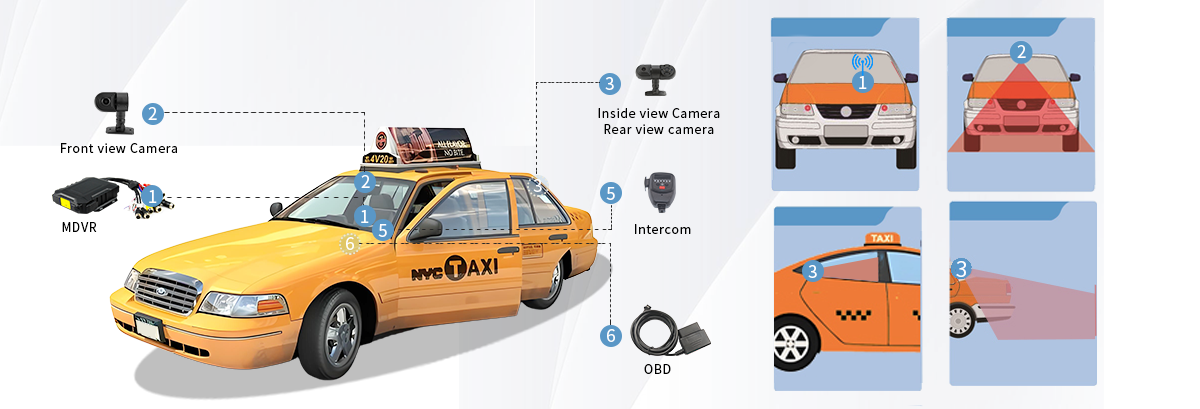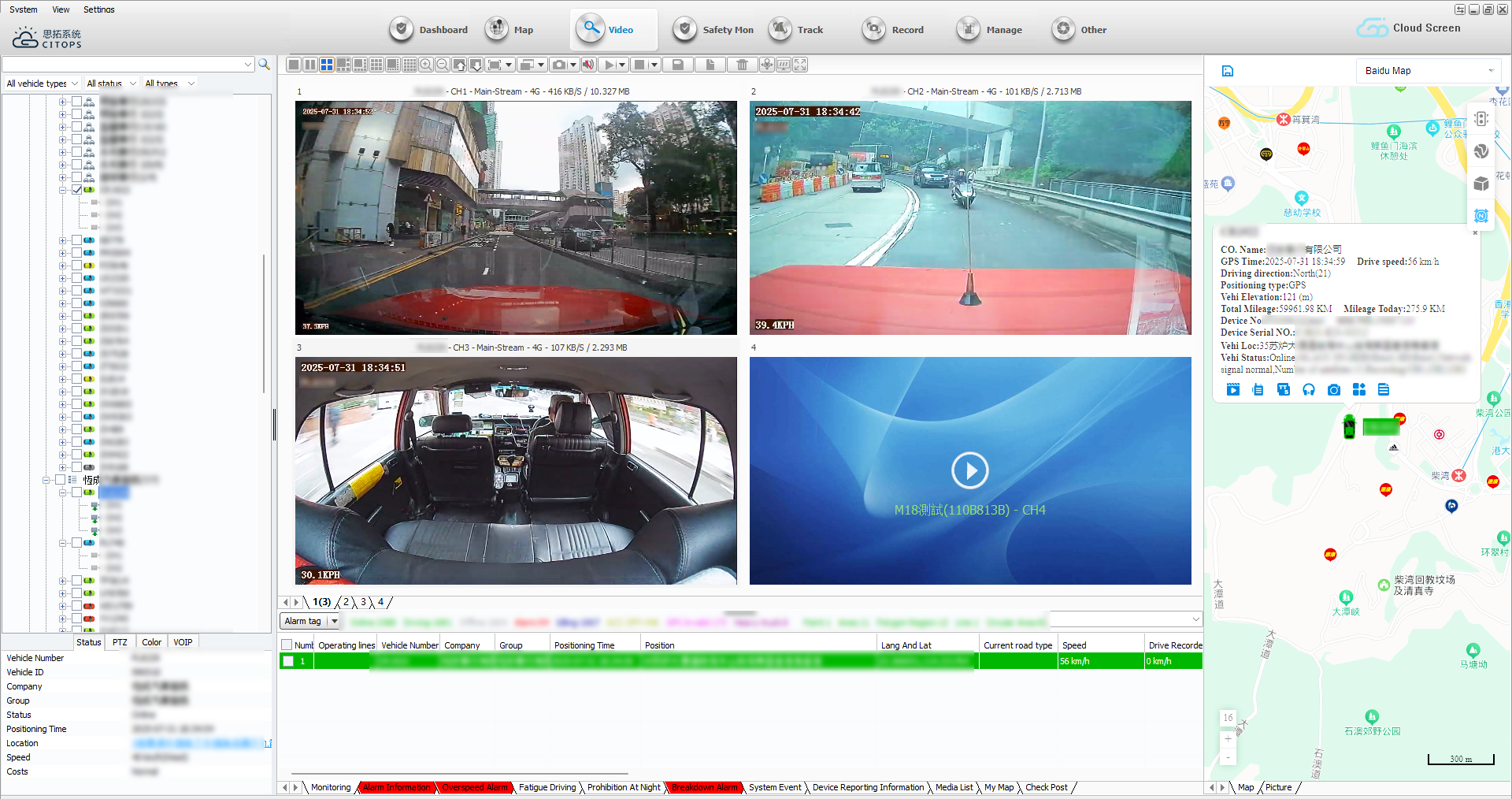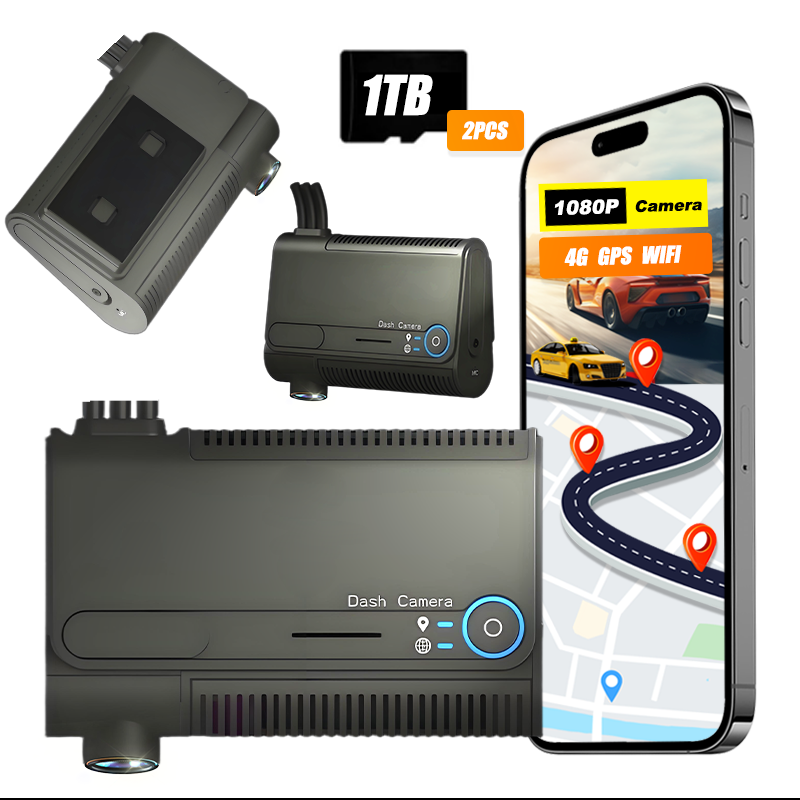Improving Fleet Oversight Through Strategic Device Installation
Effective taxi fleet management requires more than just good drivers and well-maintained vehicles. In today's urban environment, real-time tracking and continuous monitoring are vital for both safety and operational efficiency. A well-installed Car GPS DashCam can serve as an essential tool, offering a combination of location tracking, video recording, and driver behavior analysis. However, to maximize the benefits of this technology, proper placement is crucial. Poor installation can result in obstructed views, inaccurate GPS readings, and missed incidents. This guide explores how to strategically position your Car GPS DashCam units for optimal performance across your taxi fleet.
Key Considerations Before Installation
Understanding Device Capabilities
Before choosing a location for your Car GPS DashCam, it's important to understand the technical specifications of the model you're using. Some devices offer wide-angle lenses, night vision, or dual-camera configurations that cover both the road and cabin. Knowing these features will help determine the most effective mounting point that captures all necessary views without obstructions.
Assessing Vehicle Interior Layouts
Taxi vehicles vary in dashboard structure, windshield angle, and cabin space. A universal placement strategy won't apply to all vehicles. Assess each vehicle's interior to decide where the Car GPS DashCam will provide the best coverage. Pay attention to areas that might reflect sunlight or cause glare, which could compromise video quality.
Optimal DashCam Placement Techniques
Mounting at the Top-Center of the Windshield
The most common and effective location for a Car GPS DashCam is the top-center area of the windshield, just behind the rear-view mirror. This position provides a clear, unobstructed view of the road while minimizing distractions for the driver. It also maintains compliance with traffic laws regarding field-of-view obstruction. By mounting the device high on the windshield, drivers also benefit from a broader horizontal view, which can be crucial in accident reviews.
Aligning with Rear-View Mirrors for Cabin Monitoring
For dashcams with interior-facing lenses, align them parallel with the rear-view mirror to capture driver and passenger activity. This positioning supports monitoring of driver behavior, helps resolve passenger disputes, and ensures safety compliance. Mounting here can also help avoid capturing excessive dashboard reflections. In addition, it allows for consistent cabin lighting levels, which can improve footage clarity.

Enhancing Functionality with Proper Configuration
Calibrating GPS Sensors for Accuracy
A Car GPS DashCam is only as effective as its GPS accuracy. Ensure that the device has a clear line of sight to the sky by avoiding placements too close to metal components or under tinted areas. Perform a GPS calibration test post-installation to confirm real-time location data matches expected coordinates. Periodic recalibration is also recommended, especially if the dashcam is moved or serviced.
Optimizing Power Source and Cable Management
Proper power management ensures uninterrupted recording. Connect the Car GPS DashCam to a reliable power source, ideally via a hardwired connection to the fuse box. Neatly organize and conceal cables to prevent driver distraction and maintain a professional appearance inside the vehicle. Consider using cable clips and conduit tubes to keep wires secured and prevent wear from daily vehicle use.

Integration with Fleet Management Systems
Real-Time Data Transmission to Central Dashboard
Many Car GPS DashCam models support 4G or Wi-Fi data transmission. Integrate these units with your fleet management software to access live feeds, receive alerts, and analyze trends. Centralized monitoring allows for quick decision-making and timely intervention when issues arise on the road. This integration can also help in compiling performance reports for each driver, enhancing overall accountability.
Coordinating Multiple Devices Across Fleet Units
If managing a large taxi fleet, consistency in Car GPS DashCam placement helps standardize the data being collected. Use installation templates or reference points to guide uniform setup across all vehicles. This facilitates easier comparison of footage and driver behavior analytics. Additionally, having consistent placement simplifies training processes and reduces troubleshooting time.
Legal and Safety Compliance
Ensuring Compliance with Local Regulations
Before installing a Car GPS DashCam, review local laws related to in-vehicle recording and privacy. Some regions require notification stickers or consent forms for recording passengers. Ensure the dashcam placement doesn’t obstruct the driver’s field of vision, which could result in legal penalties. Documenting compliance procedures can also aid in resolving any future legal challenges.
Enhancing Passenger and Driver Confidence
Visible but discreet placement of a Car GPS DashCam can act as a deterrent against misconduct. It reassures passengers of their safety and encourages responsible behavior from drivers. Proper positioning can play a role in reducing insurance claims and enhancing the reputation of your taxi service. Fleet operators can also use recorded data as training material for improving driver etiquette.
Managing Data Storage and Footage Access
Choosing the Right Storage Method
Storing video and location data is critical for effective Car GPS DashCam operation. Most dashcam models support TF card storage , which is compact and cost-effective for daily recording needs. Some advanced units also offer cloud connectivity for remote access. Choose a storage method based on your fleet size, access frequency, and data retention requirements.
Creating a Footage Retrieval Protocol
Having a clear system for retrieving and reviewing footage ensures that critical events are never missed. Train staff to download, review, and archive videos when incidents occur. Create protocols that outline who has access to the footage, under what circumstances, and for how long the data should be retained. This not only secures sensitive information but also helps resolve disputes efficiently.
Frequently Asked Questions
What Is the Ideal Height to Mount a Car GPS DashCam in a Taxi?
Mount the dashcam just behind the rear-view mirror at the top-center of the windshield. This position ensures an unobstructed view of the road without distracting the driver.
Can the Car GPS DashCam Be Installed Without Professional Help?
Yes, many models come with DIY kits. However, for larger fleets, professional installation ensures consistency, secure wiring, and optimal placement across all vehicles.
How Can I Prevent the DashCam Footage from Being Affected by Glare?
Avoid placing the dashcam near reflective surfaces or tinted areas. Using anti-glare screen protectors and adjusting the camera angle can also help reduce reflection issues.
Is It Necessary to Inform Passengers About the Recording?
In many regions, yes. Always check local privacy laws, and when required, place visible notifications inside the vehicle to inform passengers about the Car GPS DashCam.
Table of Contents
- Improving Fleet Oversight Through Strategic Device Installation
- Key Considerations Before Installation
- Optimal DashCam Placement Techniques
- Enhancing Functionality with Proper Configuration
- Integration with Fleet Management Systems
- Legal and Safety Compliance
- Managing Data Storage and Footage Access
- Frequently Asked Questions


